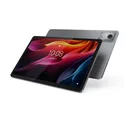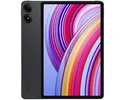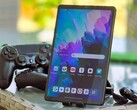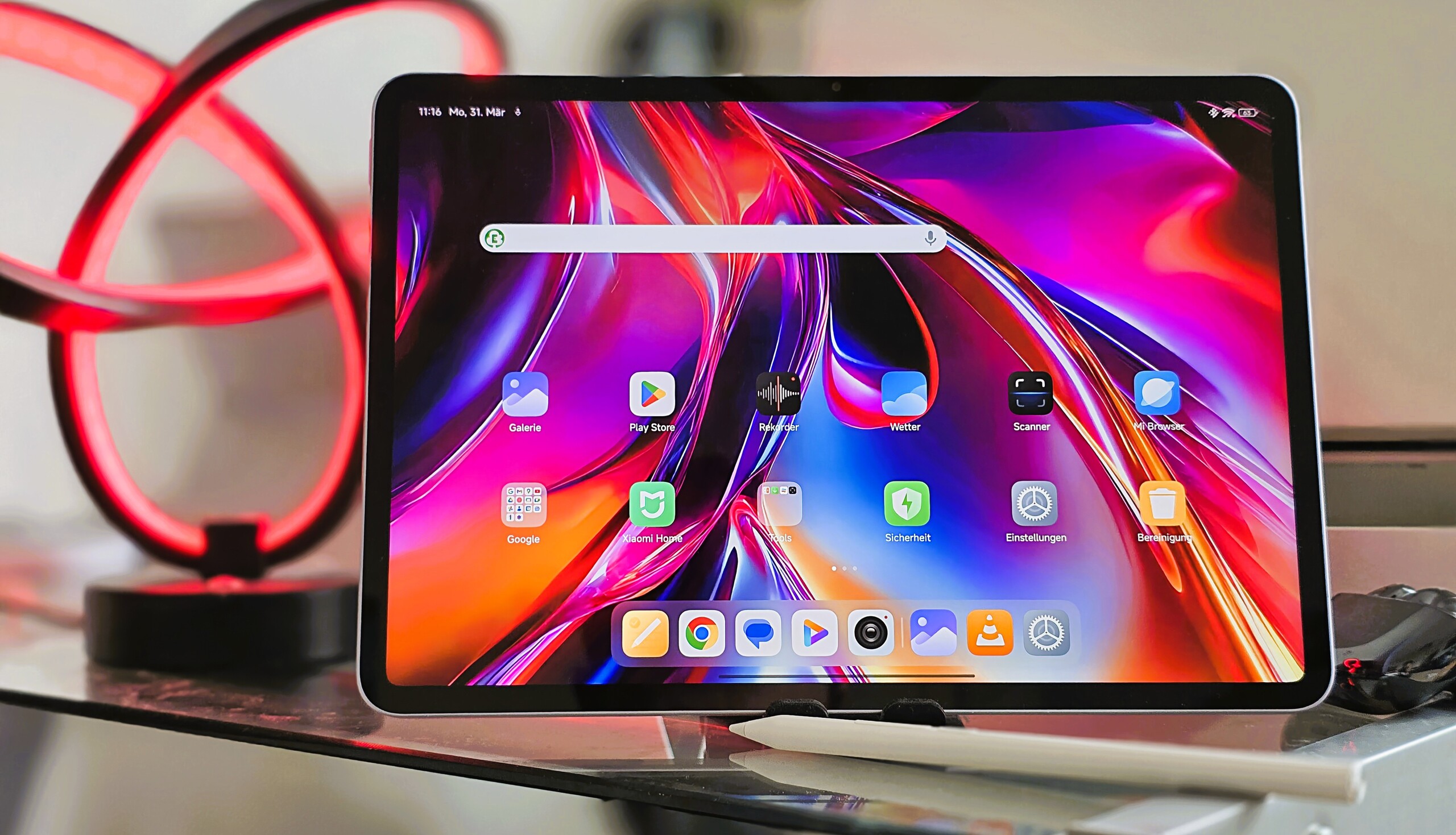
Xiaomi Pad 7 Review: Affordable all-rounder tablet that outclasses the Apple iPad
Best price-performance ratio.
The Xiaomi Pad 7 not only offers powerful features at an attractive price but also makes for a complete package for school or university with the optional stylus and keyboard cover. In particular, the bright and fast screen shows the competition, such as the likes of the iPad 11 or iPad Air 11, the limits.Marcus Herbrich, 👁 Daniel Schmidt, ✓ Vaidyanathan Subramaniam (translated by DeepL / Ninh Duy) Published 🇩🇪 🇫🇷 ...
Verdict: Price-performance productivity champ with minor shortcomings
Like its predecessor, the Xiaomi Pad 7 impresses with its excellent price-performance ratio. The high brightness of the 144 Hz screen in particular is a rarity in the mid-range tablet class, where the competition from Apple even with its partially laminated 60 Hz panel clearly has the edge. There is also a class difference in battery life, because the Pad 7 has a very strong endurance despite the higher display resolution and refresh rate.
It is quite difficult to find so many tablets for less than €400 in the Android camp. One of the reasons that speaks against the Pad 7 but in favor of the Pad 7 Pro is the lack of a fingerprint sensor, which is an important convenience and security feature.
The slightly weaker Qualcomm processor in the Pad 7 compared to the Pad 7 Pro (Snapdragon 8s Gen 3) is not really an issue in everyday use. Even for the PWM-free 2136p panel, the Pad 7's Snapdragon 7+ Gen 3 is powerful enough to ensure smooth operation and consistent gaming.
However, those who attach great importance to long-term software support should rather consider an FE model from Samsung, such as the Galaxy Tab S9 FE or Tab S10 FE, as a Pad 7 is weaker in this respect. Additionally, the connectivity of the Xiaomi tablet is limited by the lack of support for GNSS and 5G. That being said, the Pad 7 offers pen support and a keyboard case for productive work.
Pros
Cons
Price and availability
The Xiaomi Pad 7 is available from Amazon.de or directly from the manufacturer for an RRP of around €400. The Pad 7 can also be had from Amazon US starting from $499 for the 8 GB + 128 GB variant.
Table of Contents
- Verdict: Price-performance productivity champ with minor shortcomings
- Xiaomi Pad 7: Specifications
- Case: Durable metal housing without ingress protection
- Features: Xiaomi Pad 7 with fast USB 3.2
- Software: HyperOS 2.0 with Android 15 on offer
- Communication and GNSS: Wi-Fi 6E but no navigation capability
- Cameras: Pad 7 with a lone 13 MP rear shooter
- Accessories and Warranty: Pad 7 with optional stylus and keyboard
- Input devices and operation: No fingerprint sensor onboard
- Display: Bright 144 Hz LCD with no PWM
- Performance: Xiaomi relies on the Snapdragon 7+ Gen 3
- Gaming performance: Xiaomi Pad 7 achieves 120 FPS
- Emissions: The Pad 7 hardly throttles under load
- Battery life: Xiaomi Pad 7 lasts a very long time
- Notebookcheck's overall impressions of the Xiaomi Pad 7
- Potential competitors in comparison
Xiaomi pitches the Pad 7 as a jack-of-all-trades, which did not seem far-fetched during our time with the unit. On the one hand, the 6.2 mm thin mid-range tablet should be a real workhorse thanks to the workstation mode, in which applications are opened in different windows at the same time, and optional keyboard and pen support. On the other hand, the Pad 7 Pro model promises stronger multimedia features in our review, as there should be no major differences between the Pad 7 and the Pro model in terms of speakers, battery and display, at least on paper.
Fortunately, the RRP of just under €400 for the entry-level version (8 GB / 128 GB) remains unchanged compared to the predecessor. The additional surcharge of €50 euros for the top-end version of the Pad 7 with 256 GB only seems fair.
Xiaomi Pad 7: Specifications
Case: Durable metal housing without ingress protection
Externally, the Xiaomi Pad 7 has not changed much compared to the Pad 6. However, the dimensions and weight have changed slightly, as the manufacturer has tweaked the display format. While the predecessor was still presented in a 16:10 format, the Pad 7 comes with a 3:2 panel.
The size ratio between the screen and the front of the device is still very good for this price range. At just under 86% screen-to-body ratio, this mid-range Xiaomi tablet looks significantly more modern than a much more expensive iPad Air 11, for example, that offers just 81%.
The 11.2-inch display is protected by Corning Gorilla Glass 3, although a version of the Pad 7 with a nano-structured surface will follow soon to reduce reflections for outdoor use, similar to an iPad Pro 13.
There is nothing to criticize about the aluminum unibody housing, except that it is officially neither splash-proof nor waterproof. The finish is very good and the matte metal surface is only slightly susceptible to fingerprints. The Pad 7 also defies twisting attempts without any problems.
Features: Xiaomi Pad 7 with fast USB 3.2
With its quad speaker system, IR blaster, stylus support, NFC, Miracast, and USB OTG, the Pad 7 offers a comprehensive range of features for a mid-range tablet. Additionally, similar to Samsung tablets with the DeX interface, the workstation mode offers a user interface designed for multi-tasking. Thanks to the HyperConnect functions, the Pad 7 can also be connected to HyperOS smartphones to exchange data, use cameras or access up to two apps.
In Germany, the Pad 7 is available in two versions with 128 GB and 256 GB of internal UFS storage along with 8 GB LPDDR5x RAM. The USB Type-C port complies with the USB 3.2 standard, which means data can be transferred quite quickly.
In our test, we measured a data transfer rate of up to 218 MB/s with a Samsung 980 Pro (M2.SSD hard drive). The connected external storage media may be formatted with NTFS or exFAT. With the help of an adapter, the USB port can also be used as an output for image signals on external screens.
Software: HyperOS 2.0 with Android 15 on offer
The Xiaomi Pad 7 comes with the latest HyperOS version 2.01 including access to numerous AI tools, such as the Mi Canvas for creative images using text instructions and AI Writing for supportive text creation and real-time transcription. With HyperAI, an AI assistant is also available, which is an adapted version of Google's Gemini.
The Pad 7 is not yet listed in the Xiaomi Security Center, but two major Android updates and three years of security patches can be expected to be rolled out in the future. This is already possible in this price range with the Galaxy Tab S9 FE, but Xiaomi is not exactly renowned for rolling out updates in the mid-range promptly. During the time of our review, the Xiaomi tablet had the latest Android 15 OS including security patches from February 2025.
Sustainability
The Pad 7's packaging appears to be plastic-free, the tablet itself is wrapped in a kind of fabric. The rest of the packaging is made of cardboard. Xiaomi does not provide precise details on the materials used and their recycling rate, but the manufacturer does provide general information on the subject of recycling.
For example, there is an increased use of recycled materials, including aluminum, gold and copper, or plastic from discarded fishing nets.
Communication and GNSS: Wi-Fi 6E but no navigation capability
The Xiaomi Pad 7 does not feature a cellular modem or a GNSS module. Two microphones are installed for video calls.
The fast Wi-Fi 6E standard uses the 6 GHz frequency band for wireless transmissions, which enables very high transfer rates of almost 1,900 MB/s at peak in combination with our Asus ROG Rapture GT-AXE11000 reference router.
Qualcomm's FastConnect 6900 seems somewhat unstable in the 5 GHz channel.
Cameras: Pad 7 with a lone 13 MP rear shooter
In contrast to the Pro model, the base Xiaomi Pad 7 has to make do with the camera setup of its predecessor. The 8 MP front camera with fixed focus enables good results in daylight. Short video messages can be recorded in 1080p, and the quality is fine for video calls.
The 13 MP main camera on the rear delivers sharp photos in sufficient light, although the dynamic range does not always appear optimal. The color reproduction and level of detail are sufficient for occasional snapshots.
When lighting conditions deteriorate, the Pad 7's images quickly become noisy due to the small 1/3.06 inch sensor, though not as extreme as the Apple iPad 11 in our test photos.
Users are more likely to use the camera for taking pictures of documents or notes, for which there is a special mode in the camera app.
Image comparison
Choose a scene and navigate within the first image. One click changes the position on touchscreens. One click on the zoomed-in image opens the original in a new window. The first image shows the scaled photograph of the test device.
HauptkameraHauptkameraLow LightZoom 5xUnder controlled lighting conditions, we take a closer look at the color fidelity of the 13 MP optics. The deviations from the reference colors hardly show any significant outliers (Delta E>10) and most color tones are captured accurately.


Accessories and Warranty: Pad 7 with optional stylus and keyboard
Unlike the Pad 6, Xiaomi has dispensed with the power adapter this time around as there's no charger included in the packaging. A 45 W charger (RRP: €25) can be purchased separately if needed. The Pad 7's scope of delivery only includes the usual info papers and a USB cable. However, the USB 3.2 Gen 1 functionality (image output) is not possible with the included cable.
Xiaomi also offers the Focus Pen for about €100 RRP and a keyboard cover for around €130 RRP as optional accessories for the Pad 7. If you order directly from the manufacturer, the keyboard cover is offered free of charge while the pen can be had at a discounted price of €70.
Xiaomi offers a 12-month warranty on its tablet in Germany.
Input devices and operation: No fingerprint sensor onboard
The capacitive fingerprint scanner of the Pad 7 Pro is unfortunately missing on the Pad 7. Biometric unlock is, therefore, only possible by face via the front camera. Both the reaction speed and the recognition rate of the 2D face recognition convinced us in the test in good lighting conditions, but this method is considered rather insecure.
Touch inputs are implemented quickly and precisely on the 11.2-inch LCD panel with its sampling rate of up to 360 Hz. Animations on the HyperOS interface also appear smooth thanks to the high refresh rate of 144 Hz. There is no vibration motor for haptics.
The 15 g Focus Pen, which can distinguish between 8,192 pressure levels, makes handwritten notes with the Pad 7 very easy. The plastic pen fits comfortably in the hand, has a high-quality feel and the screen barely lags behind the tip during fast movements. The manufacturer specifies a low latency of 3 ms. The pen supports gesture controls and a "Spotlight" button, which can be used as a remote shutter release among other things.
The pen can be stowed in the Focus Keyboard that offers backlighting and an infinitely variable display angle adjustment from 0 to 124° during transportation. We were not provided the keyboard cover for testing, however.
Display: Bright 144 Hz LCD with no PWM
The Pad 7's 11.2-inch LCD panel sports a 3,200 x 2,136 resolution with a pixel density of 344 PPI while offering a 7-stage, adaptive refresh rate between 44 Hz and 144 Hz. The Dolby Vision-capable panel also has triple certification from TÜV Rheinland for a flicker-free display. We were also unable to detect PWM flickering in our measurements.
Xiaomi promises a maximum brightness of 800 cd/m², which we can confirm both in the APL18 test and on a pure white background, which is a high value for a mid-range tablet. Surprisingly, the brightness drops to 565 cd/m² in our HDR video for some reason.
| |||||||||||||||||||||||||
Brightness Distribution: 96 %
Center on Battery: 838 cd/m²
Contrast: 952:1 (Black: 0.88 cd/m²)
ΔE ColorChecker Calman: 1.8 | ∀{0.5-29.43 Ø4.78}
ΔE Greyscale Calman: 2.5 | ∀{0.09-98 Ø5}
97.3% sRGB (Calman 2D)
Gamma: 2.25
CCT: 6912 K
| Xiaomi Pad 7 LCD, 3200x2136, 11.2" | Xiaomi Pad 7 Pro IPS, 3200x2136, 11.2" | Lenovo Tab K11 Plus IPS, 2000x1200, 11.5" | Xiaomi Redmi Pad Pro IPS, 2560x1600, 12.1" | Apple iPad 10 IPS, 2360x1640, 10.9" | Samsung Galaxy Tab S6 Lite 2024 TFT, 2000x1200, 10.4" | |
|---|---|---|---|---|---|---|
| Screen | 6% | 17% | -25% | -0% | -5% | |
| Brightness middle (cd/m²) | 838 | 776 -7% | 473 -44% | 513 -39% | 467 -44% | 486 -42% |
| Brightness (cd/m²) | 815 | 750 -8% | 449 -45% | 480 -41% | 468 -43% | 466 -43% |
| Brightness Distribution (%) | 96 | 91 -5% | 87 -9% | 86 -10% | 92 -4% | 92 -4% |
| Black Level * (cd/m²) | 0.88 | 0.58 34% | 0.25 72% | 0.4 55% | 0.49 44% | 0.26 70% |
| Contrast (:1) | 952 | 1338 41% | 1892 99% | 1283 35% | 953 0% | 1869 96% |
| Colorchecker dE 2000 * | 1.8 | 1.6 11% | 1.56 13% | 2.82 -57% | 1.4 22% | 2.29 -27% |
| Colorchecker dE 2000 max. * | 3.9 | 4.5 -15% | 3.8 3% | 8.83 -126% | 3.3 15% | 6.82 -75% |
| Greyscale dE 2000 * | 2.5 | 2.5 -0% | 1.3 48% | 2.9 -16% | 2.3 8% | 2.8 -12% |
| Gamma | 2.25 98% | 2.23 99% | 2.178 101% | 2.265 97% | 2.21 100% | 2.229 99% |
| CCT | 6912 94% | 6892 94% | 6726 97% | 7189 90% | 6852 95% | 7145 91% |
* ... smaller is better
Screen Flickering / PWM (Pulse-Width Modulation)
| Screen flickering / PWM not detected | |||
In comparison: 53 % of all tested devices do not use PWM to dim the display. If PWM was detected, an average of 8108 (minimum: 5 - maximum: 343500) Hz was measured. | |||
Based on provided specifications, there are no differences between the mid-range tablet and the Pro model in terms of the screen. However, the black level of the Pad 7 is significantly worse, which could indicate different display suppliers as with other Xiaomi devices.
That being said, the black level ensures an average contrast of around 1:1,000 in everyday use, which is slightly higher in the APL18 measurement due to richer blacks (0.84 cd/m²). However, compared to the competition with significantly lower illumination the high luminosity of the Pad 7 should be taken into account, which tends to result in black tones appearing less deep as the light is not completely blocked by the liquid crystals.
The setting options for the color display are also extensive. In addition to various color profiles, the color temperature and color space can be adjusted as well. The colors are very well calibrated. Differences in the individual colors are barely noticeable.
Display Response Times
| ↔ Response Time Black to White | ||
|---|---|---|
| 15.78 ms ... rise ↗ and fall ↘ combined | ↗ 3.774 ms rise | |
| ↘ 12.01 ms fall | ||
| The screen shows good response rates in our tests, but may be too slow for competitive gamers. In comparison, all tested devices range from 0.1 (minimum) to 240 (maximum) ms. » 36 % of all devices are better. This means that the measured response time is better than the average of all tested devices (20.2 ms). | ||
| ↔ Response Time 50% Grey to 80% Grey | ||
| 30.94 ms ... rise ↗ and fall ↘ combined | ↗ 6.732 ms rise | |
| ↘ 24.21 ms fall | ||
| The screen shows slow response rates in our tests and will be unsatisfactory for gamers. In comparison, all tested devices range from 0.165 (minimum) to 636 (maximum) ms. » 40 % of all devices are better. This means that the measured response time is similar to the average of all tested devices (31.6 ms). | ||
The viewing angle stability of the LCD screen is good and the Pad 7 makes a strong impression outdoors for a mid-range tablet. This implies there is sufficient brightness for outdoor use.
However, reflections on the glass surface are annoying on our variant without the nano texture coating. A slight clouding typical of LCDs occurs with a completely black image, but this hardly has any negative effect in everyday use.
Performance: Xiaomi relies on the Snapdragon 7+ Gen 3
The Snapdragon 7+ Gen 3 is less powerful than the Snapdragon 8s Gen 3 in the Pad 7 Pro. Nevertheless, SoC still feels very powerful for the mid-range tablet class. A look at the Geekbench values shows a noticeable increase for both the single and multi-core compared to the Pad that featured the Snapdragon 870.
Overall, the Pad 7 comes surprisingly close to the results of the Pro model
| UL Procyon AI Inference for Android - Overall Score NNAPI | |
| Average of class Tablet (2597 - 76852, n=62, last 2 years) | |
| Xiaomi Pad 6 | |
| Xiaomi Pad 7 Pro | |
| Xiaomi Pad 7 | |
| Average Qualcomm Snapdragon 7+ Gen 3 (10851 - 13965, n=2) | |
| Xiaomi Redmi Pad Pro | |
| Samsung Galaxy Tab S6 Lite 2024 | |
| Lenovo Tab K11 Plus | |
| Geekbench AI | |
| Quantized TensorFlow NNAPI 1.2 | |
| Average of class Tablet (130 - 4532, n=15, last 2 years) | |
| Xiaomi Pad 7 Pro | |
| Xiaomi Pad 7 | |
| Average Qualcomm Snapdragon 7+ Gen 3 (n=1) | |
| Lenovo Tab K11 Plus | |
| Half Precision TensorFlow NNAPI 1.2 | |
| Average of class Tablet (84 - 4545, n=15, last 2 years) | |
| Xiaomi Pad 7 Pro | |
| Xiaomi Pad 7 | |
| Average Qualcomm Snapdragon 7+ Gen 3 (n=1) | |
| Lenovo Tab K11 Plus | |
| Single Precision TensorFlow NNAPI 1.2 | |
| Xiaomi Pad 7 Pro | |
| Average of class Tablet (85 - 1140, n=15, last 2 years) | |
| Xiaomi Pad 7 | |
| Average Qualcomm Snapdragon 7+ Gen 3 (n=1) | |
| Lenovo Tab K11 Plus | |
This trend continues in the GPU tests, where we often see the Pad 7 Pro even slightly weaker than the non-Pro variant, which could be due to the fact that the Adreno 732 and Adreno 735 GPUs have similar specifications.
A comparison with the iPad 10 or Redmi Pad Pro demonstrates the high GPU power of the Pad 7.
GFXBench (DX / GLBenchmark) 2.7: T-Rex Onscreen | 1920x1080 T-Rex Offscreen
GFXBench 3.0: on screen Manhattan Onscreen OGL | 1920x1080 1080p Manhattan Offscreen
GFXBench 3.1: on screen Manhattan ES 3.1 Onscreen | 1920x1080 Manhattan ES 3.1 Offscreen
GFXBench: on screen Car Chase Onscreen | 1920x1080 Car Chase Offscreen | on screen Aztec Ruins High Tier Onscreen | 2560x1440 Aztec Ruins High Tier Offscreen | on screen Aztec Ruins Normal Tier Onscreen | 1920x1080 Aztec Ruins Normal Tier Offscreen | 3840x2160 4K Aztec Ruins High Tier Offscreen
| 3DMark / Wild Life Extreme Unlimited | |
| Xiaomi Pad 7 Pro | |
| Xiaomi Pad 7 | |
| Apple iPad 10 | |
| Xiaomi Redmi Pad Pro | |
| Samsung Galaxy Tab S6 Lite 2024 | |
| Lenovo Tab K11 Plus | |
| 3DMark / Wild Life Extreme | |
| Xiaomi Pad 7 Pro | |
| Xiaomi Pad 7 | |
| Apple iPad 10 | |
| Xiaomi Redmi Pad Pro | |
| Samsung Galaxy Tab S6 Lite 2024 | |
| Lenovo Tab K11 Plus | |
| 3DMark / Wild Life Unlimited Score | |
| Xiaomi Pad 7 Pro | |
| Xiaomi Pad 7 | |
| Apple iPad 10 | |
| Xiaomi Redmi Pad Pro | |
| Samsung Galaxy Tab S6 Lite 2024 | |
| Lenovo Tab K11 Plus | |
| 3DMark / Steel Nomad Light Unlimited Score | |
| Xiaomi Pad 7 Pro | |
| Xiaomi Pad 7 | |
| Lenovo Tab K11 Plus | |
| 3DMark / Steel Nomad Light Score | |
| Xiaomi Pad 7 Pro | |
| Xiaomi Pad 7 | |
| Lenovo Tab K11 Plus | |
| GFXBench (DX / GLBenchmark) 2.7 / T-Rex Onscreen | |
| Xiaomi Pad 7 | |
| Xiaomi Pad 7 Pro | |
| Xiaomi Redmi Pad Pro | |
| Apple iPad 10 | |
| Samsung Galaxy Tab S6 Lite 2024 | |
| Lenovo Tab K11 Plus | |
| GFXBench (DX / GLBenchmark) 2.7 / T-Rex Offscreen | |
| Xiaomi Pad 7 | |
| Xiaomi Pad 7 Pro | |
| Apple iPad 10 | |
| Xiaomi Redmi Pad Pro | |
| Samsung Galaxy Tab S6 Lite 2024 | |
| Lenovo Tab K11 Plus | |
| GFXBench 3.0 / Manhattan Onscreen OGL | |
| Xiaomi Pad 7 | |
| Xiaomi Pad 7 Pro | |
| Apple iPad 10 | |
| Samsung Galaxy Tab S6 Lite 2024 | |
| Xiaomi Redmi Pad Pro | |
| Lenovo Tab K11 Plus | |
| GFXBench 3.0 / 1080p Manhattan Offscreen | |
| Xiaomi Pad 7 | |
| Xiaomi Pad 7 Pro | |
| Apple iPad 10 | |
| Xiaomi Redmi Pad Pro | |
| Samsung Galaxy Tab S6 Lite 2024 | |
| Lenovo Tab K11 Plus | |
| GFXBench 3.1 / Manhattan ES 3.1 Onscreen | |
| Xiaomi Pad 7 | |
| Apple iPad 10 | |
| Xiaomi Pad 7 Pro | |
| Samsung Galaxy Tab S6 Lite 2024 | |
| Xiaomi Redmi Pad Pro | |
| Lenovo Tab K11 Plus | |
| GFXBench 3.1 / Manhattan ES 3.1 Offscreen | |
| Xiaomi Pad 7 | |
| Xiaomi Pad 7 Pro | |
| Apple iPad 10 | |
| Xiaomi Redmi Pad Pro | |
| Samsung Galaxy Tab S6 Lite 2024 | |
| Lenovo Tab K11 Plus | |
| GFXBench / Car Chase Onscreen | |
| Apple iPad 10 | |
| Xiaomi Pad 7 | |
| Xiaomi Pad 7 Pro | |
| Samsung Galaxy Tab S6 Lite 2024 | |
| Xiaomi Redmi Pad Pro | |
| Lenovo Tab K11 Plus | |
| GFXBench / Car Chase Offscreen | |
| Xiaomi Pad 7 | |
| Xiaomi Pad 7 Pro | |
| Apple iPad 10 | |
| Xiaomi Redmi Pad Pro | |
| Samsung Galaxy Tab S6 Lite 2024 | |
| Lenovo Tab K11 Plus | |
| GFXBench / Aztec Ruins High Tier Onscreen | |
| Apple iPad 10 | |
| Xiaomi Pad 7 Pro | |
| Xiaomi Pad 7 | |
| Samsung Galaxy Tab S6 Lite 2024 | |
| Xiaomi Redmi Pad Pro | |
| Lenovo Tab K11 Plus | |
| GFXBench / Aztec Ruins High Tier Offscreen | |
| Xiaomi Pad 7 Pro | |
| Xiaomi Pad 7 | |
| Apple iPad 10 | |
| Xiaomi Redmi Pad Pro | |
| Samsung Galaxy Tab S6 Lite 2024 | |
| Lenovo Tab K11 Plus | |
| GFXBench / Aztec Ruins Normal Tier Onscreen | |
| Apple iPad 10 | |
| Xiaomi Pad 7 | |
| Xiaomi Pad 7 Pro | |
| Samsung Galaxy Tab S6 Lite 2024 | |
| Xiaomi Redmi Pad Pro | |
| Lenovo Tab K11 Plus | |
| GFXBench / Aztec Ruins Normal Tier Offscreen | |
| Xiaomi Pad 7 Pro | |
| Xiaomi Pad 7 | |
| Apple iPad 10 | |
| Xiaomi Redmi Pad Pro | |
| Samsung Galaxy Tab S6 Lite 2024 | |
| Lenovo Tab K11 Plus | |
| GFXBench / 4K Aztec Ruins High Tier Offscreen | |
| Xiaomi Pad 7 Pro | |
| Xiaomi Pad 7 | |
| Apple iPad 10 | |
| Xiaomi Redmi Pad Pro | |
| Samsung Galaxy Tab S6 Lite 2024 | |
| Lenovo Tab K11 Plus | |
The Pad 7 delivers strong results in browser benchmarks, often even ahead of the Pro model model. However, we tested a Chinese version of the latter without native integration of Google services, such as the Chrome browser.
The browser speeds are also impressive in everyday use; websites are opened quickly and can be scrolled through smoothly.
| Jetstream 2 - 2.0 Total Score | |
| Average Qualcomm Snapdragon 7+ Gen 3 (119.9 - 260, n=4) | |
| Xiaomi Pad 7 Pro (Chrome 132) | |
| Xiaomi Pad 7 (Chrome 135) | |
| Apple iPad 10 (Safari Mobile 16.1) | |
| Average of class Tablet (22.3 - 395, n=67, last 2 years) | |
| Xiaomi Redmi Pad Pro (Chrome 128) | |
| Samsung Galaxy Tab S6 Lite 2024 (Chrome 124) | |
| Lenovo Tab K11 Plus (Chrome 131.0.6778.260) | |
| Speedometer 2.0 - Result 2.0 | |
| Apple iPad 10 (Safari Mobile 16.1) | |
| Average of class Tablet (2.59 - 790, n=55, last 2 years) | |
| Xiaomi Pad 7 (Chrome 135) | |
| Average Qualcomm Snapdragon 7+ Gen 3 (107 - 145, n=2) | |
| Samsung Galaxy Tab S6 Lite 2024 (Chrome 124) | |
| Lenovo Tab K11 Plus (Chrome 131.0.6778.260) | |
| Speedometer 3 - Score 3.0 | |
| Xiaomi Pad 7 (Chrome 135) | |
| Average of class Tablet (1.25 - 49.1, n=64, last 2 years) | |
| Average Qualcomm Snapdragon 7+ Gen 3 (11 - 15.9, n=2) | |
| Xiaomi Pad 7 Pro (Chrome 132) | |
| Xiaomi Redmi Pad Pro (Chrome 128) | |
| Samsung Galaxy Tab S6 Lite 2024 (Chrome 124) | |
| Lenovo Tab K11 Plus (Chrome 131.0.6778.260) | |
| WebXPRT 4 - Overall | |
| Xiaomi Pad 7 Pro (Chrome 132) | |
| Xiaomi Pad 7 (Chrome 135) | |
| Apple iPad 10 (Safari Mobile 16.1) | |
| Average of class Tablet (26 - 376, n=71, last 2 years) | |
| Average Qualcomm Snapdragon 7+ Gen 3 (110 - 151, n=2) | |
| Samsung Galaxy Tab S6 Lite 2024 (Chrome 124) | |
| Xiaomi Redmi Pad Pro (Chrome 128) | |
| Lenovo Tab K11 Plus (Chrome 131.0.6778.260) | |
| Octane V2 - Total Score | |
| Xiaomi Pad 7 (Chrome 135) | |
| Xiaomi Pad 7 Pro (Chrome 132) | |
| Average Qualcomm Snapdragon 7+ Gen 3 (55668 - 66744, n=2) | |
| Apple iPad 10 (Safari Mobile 16.1) | |
| Average of class Tablet (763 - 138481, n=95, last 2 years) | |
| Xiaomi Redmi Pad Pro (Chrome 128) | |
| Samsung Galaxy Tab S6 Lite 2024 (Chrome 124) | |
| Lenovo Tab K11 Plus (Chrome 131.0.6778.260) | |
| Mozilla Kraken 1.1 - Total | |
| Average of class Tablet (243 - 27101, n=80, last 2 years) | |
| Lenovo Tab K11 Plus (Chrome 131.0.6778.260) | |
| Samsung Galaxy Tab S6 Lite 2024 (Chrome 124) | |
| Xiaomi Redmi Pad Pro (Chrome 128) | |
| Average Qualcomm Snapdragon 7+ Gen 3 (565 - 1153, n=2) | |
| Xiaomi Pad 7 Pro (Chrome 132) | |
| Xiaomi Pad 7 (Chrome 135) | |
| Apple iPad 10 (Safari Mobile 16.1) | |
* ... smaller is better
Thanks to the fast UFS 4.0 standard, the Xiaomi tablet delivers very good read and write rates in our 256 GB version. It should be noted that the variant with 128 GB storage is only specified with UFS 3.1 and will therefore achieve poorer results.
| Xiaomi Pad 7 | Xiaomi Pad 7 Pro | Lenovo Tab K11 Plus | Xiaomi Redmi Pad Pro | Samsung Galaxy Tab S6 Lite 2024 | Average 256 GB UFS 4.0 Flash | Average of class Tablet | |
|---|---|---|---|---|---|---|---|
| AndroBench 3-5 | -2% | -51% | -55% | -76% | 4% | -39% | |
| Sequential Read 256KB (MB/s) | 3911.82 | 3849.52 -2% | 1003.25 -74% | 844.9 -78% | 521.67 -87% | 3664 ? -6% | 1795 ? -54% |
| Sequential Write 256KB (MB/s) | 3387.43 | 3283.91 -3% | 876.29 -74% | 705.3 -79% | 80.44 -98% | 2701 ? -20% | 1342 ? -60% |
| Random Read 4KB (MB/s) | 311.09 | 302.34 -3% | 244.03 -22% | 215.5 -31% | 167.23 -46% | 381 ? 22% | 246 ? -21% |
| Random Write 4KB (MB/s) | 344.51 | 346.85 1% | 232.16 -33% | 231.4 -33% | 98.68 -71% | 405 ? 18% | 280 ? -19% |
Gaming performance: Xiaomi Pad 7 achieves 120 FPS
We tested the suitability of the Xiaomi Pad 7 for gaming using the GameBench app. Although the Snapdragon 7+ Gen 3 is a mid-range SoC, demanding games such as Genshin Impact are playable at a consistent 60 fps on the 11.2-inch screen with the highest graphics settings, and that's as good as it gets on Android.
High-frame rate gaming in PUBG Mobile is only possible at 90 fps as the 120 fps option in the game is not supported by the Xiaomi tablet. With older games, such as Dead Trigger, we measured an average of 117 fps.
Emissions: The Pad 7 hardly throttles under load
Temperature
Excess heat emissions under load are not a problem with the Pad 7; even in a temperature hot spot, we only measured a moderate warming of less than 42 °C. This also benefits the sustained performance, which we check with the 3DMark Wild Life Stress tests.
Under load, the Snapdragon 7+ Gen 3 only throttles between 1.5 and 13% under load, which makes any noticeable reduction in system performance in everyday use very unlikely.
(±) The maximum temperature on the upper side is 41.7 °C / 107 F, compared to the average of 33.7 °C / 93 F, ranging from 20.7 to 53.2 °C for the class Tablet.
(+) The bottom heats up to a maximum of 39.4 °C / 103 F, compared to the average of 33.2 °C / 92 F
(+) In idle usage, the average temperature for the upper side is 28.8 °C / 84 F, compared to the device average of 30 °C / 86 F.
3DMark Steel Nomad Stress Test
| 3DMark | |
| Wild Life Stress Test Stability | |
| Lenovo Tab K11 Plus | |
| Xiaomi Redmi Pad Pro | |
| Samsung Galaxy Tab S6 Lite 2024 | |
| Xiaomi Pad 7 Pro | |
| Xiaomi Pad 7 | |
| Apple iPad 10 | |
| Wild Life Extreme Stress Test | |
| Xiaomi Redmi Pad Pro | |
| Samsung Galaxy Tab S6 Lite 2024 | |
| Lenovo Tab K11 Plus | |
| Xiaomi Pad 7 Pro | |
| Xiaomi Pad 7 | |
| Apple iPad 10 | |
| Solar Bay Stress Test Stability | |
| Xiaomi Pad 7 Pro | |
| Steel Nomad Light Stress Test Stability | |
| Xiaomi Pad 7 | |
| Xiaomi Pad 7 Pro | |
| Lenovo Tab K11 Plus | |
Speakers
The Pad 7's sound quality is really good for this price range. The Dolby Atmos-certified quad speaker system of the Pad 7 provides an appealing stereo and aural experience. Our pink noise measurements show slight bass in the sound, which is also perceivable in everyday use.
For use with wireless or wired headphones, the Xiaomi tablet offers a USB Type-C port and Bluetooth version 5.4. Buyers of the Pad 7 also have a wide range of codecs to choose from.
Xiaomi Pad 7 audio analysis
(+) | speakers can play relatively loud (90.4 dB)
Bass 100 - 315 Hz
(-) | nearly no bass - on average 17.9% lower than median
(+) | bass is linear (6.5% delta to prev. frequency)
Mids 400 - 2000 Hz
(±) | higher mids - on average 5.4% higher than median
(+) | mids are linear (5.6% delta to prev. frequency)
Highs 2 - 16 kHz
(+) | balanced highs - only 2.7% away from median
(+) | highs are linear (4.7% delta to prev. frequency)
Overall 100 - 16.000 Hz
(+) | overall sound is linear (13.9% difference to median)
Compared to same class
» 27% of all tested devices in this class were better, 5% similar, 67% worse
» The best had a delta of 7%, average was 21%, worst was 129%
Compared to all devices tested
» 15% of all tested devices were better, 4% similar, 81% worse
» The best had a delta of 4%, average was 24%, worst was 134%
Xiaomi Redmi Pad Pro audio analysis
(+) | speakers can play relatively loud (82 dB)
Bass 100 - 315 Hz
(-) | nearly no bass - on average 19.3% lower than median
(±) | linearity of bass is average (11.4% delta to prev. frequency)
Mids 400 - 2000 Hz
(±) | higher mids - on average 6.7% higher than median
(±) | linearity of mids is average (8% delta to prev. frequency)
Highs 2 - 16 kHz
(+) | balanced highs - only 2.9% away from median
(±) | linearity of highs is average (7% delta to prev. frequency)
Overall 100 - 16.000 Hz
(±) | linearity of overall sound is average (19.8% difference to median)
Compared to same class
» 55% of all tested devices in this class were better, 7% similar, 38% worse
» The best had a delta of 7%, average was 21%, worst was 129%
Compared to all devices tested
» 50% of all tested devices were better, 7% similar, 43% worse
» The best had a delta of 4%, average was 24%, worst was 134%
Battery life: Xiaomi Pad 7 lasts a very long time
Energy consumption
The 8,850 mAh battery can be charged at a maximum charging power of 45 W. Although a suitable power adapter is no longer included, the mid-range tablet is QuickCharge 3 (QC3) and Power Delivery 3 (PD3) compatible, which means that standard power banks can be used. Using the Xiaomi 25000 power bank, the battery can be fully recharged in about 1.5 hours.
The overall power consumption is exemplary. At just 1.7 W in idle mode, the Pad 7 consumes relatively little energy for a 11.2-inch tablet. Under load, the peak consumption is significantly lower than the Pad 7 Pro.
| Off / Standby | |
| Idle | |
| Load |
|
Key:
min: | |
| Xiaomi Pad 7 8850 mAh | Xiaomi Pad 7 Pro 8850 mAh | Lenovo Tab K11 Plus 8600 mAh | Xiaomi Redmi Pad Pro 10000 mAh | Apple iPad 10 7606 mAh | Samsung Galaxy Tab S6 Lite 2024 7040 mAh | Average Qualcomm Snapdragon 7+ Gen 3 | Average of class Tablet | |
|---|---|---|---|---|---|---|---|---|
| Power Consumption | -18% | 0% | -55% | -167% | 4% | -67% | -109% | |
| Idle Minimum * (Watt) | 0.74 | 0.75 -1% | 1.1 -49% | 1.7 -130% | 1.34 -81% | 1.2 -62% | 1.2 ? -62% | 2.04 ? -176% |
| Idle Average * (Watt) | 1.72 | 1.5 13% | 1.3 24% | 2.2 -28% | 7.78 -352% | 1.4 19% | 3.88 ? -126% | 3.94 ? -129% |
| Idle Maximum * (Watt) | 1.74 | 1.56 10% | 1.6 8% | 2.9 -67% | 7.89 -353% | 1.8 -3% | 4.01 ? -130% | 4.29 ? -147% |
| Load Average * (Watt) | 7.26 | 7.92 -9% | 4.4 39% | 5.8 20% | 9.05 -25% | 2.5 66% | 6.98 ? 4% | 9.24 ? -27% |
| Load Maximum * (Watt) | 8.11 | 16.5 -103% | 9.8 -21% | 13.9 -71% | 9.98 -23% | 8.3 -2% | 9.71 ? -20% | 13.5 ? -66% |
* ... smaller is better
Power consumption: Geekbench (150 cd/m²)
Power consumption: GFXbench (150 cd/m²)
Battery life
In our practical battery tests with a brightness of 150 cd/m², the Pad 7 proves to be quite enduring with over 18 hours of backup on Wi-Fi and almost 21 hours of video playback. The Xiaomi Pad 7 offers a runtime that is over eight hours better than the Apple iPad 10.
| Xiaomi Pad 7 8850 mAh | Xiaomi Pad 7 Pro 8850 mAh | Lenovo Tab K11 Plus 8600 mAh | Xiaomi Redmi Pad Pro 10000 mAh | Apple iPad 10 7606 mAh | Samsung Galaxy Tab S6 Lite 2024 7040 mAh | |
|---|---|---|---|---|---|---|
| Battery runtime | -3% | -27% | -10% | -33% | -3% | |
| Reader / Idle (h) | 41.4 | 25.3 -39% | 37.3 -10% | 28.8 -30% | 51 23% | |
| H.264 (h) | 20.8 | 12.1 -42% | 17.5 -16% | 12.3 -41% | 15.7 -25% | |
| WiFi v1.3 (h) | 18.1 | 17.6 -3% | 12.2 -33% | 15.4 -15% | 10.8 -40% | 12.6 -30% |
| Load (h) | 4 | 4.3 8% | 4.1 3% | 3.2 -20% | 4.8 20% |
Notebookcheck's overall impressions of the Xiaomi Pad 7
The Xiaomi Pad 7 has the potential to become a big hit in the mid-range with its extra-bright 144 Hz display, great productivity features, and long battery run times.
Xiaomi Pad 7
- 04/11/2025 v8
Marcus Herbrich
Potential competitors in comparison
Image | Model / Review | Price | Weight | Drive | Display |
|---|---|---|---|---|---|
| Xiaomi Pad 7 Qualcomm Snapdragon 7+ Gen 3 ⎘ Qualcomm Adreno 732 ⎘ 12 GB Memory, 256 GB | Amazon: 1. $379.50 XIAOMI Pad 7 Ai WiFi Version... 2. $525.00 Xiaomi Pad 7 Pro Ai WiFi Ver... 3. $367.00 XIAOMI Pad 7 Ai WiFi Version... List Price: 400€ | 500 g | 256 GB UFS 4.0 Flash | 11.20" 3200x2136 344 PPI LCD | |
| Xiaomi Pad 7 Pro Qualcomm Snapdragon 8s Gen 3 ⎘ Qualcomm Adreno 735 ⎘ 12 GB Memory, 256 GB | Amazon: 1. $525.00 Xiaomi Pad 7 Pro Ai WiFi Ver... 2. $472.50 Xiaomi Pad 7 Pro Ai WiFi Ver... 3. $525.00 Xiaomi Pad 7 Pro Ai WiFi Ver... List Price: 450€ | 500 g | 256 GB UFS 4.0 Flash | 11.20" 3200x2136 344 PPI IPS | |
| Lenovo Tab K11 Plus Qualcomm Snapdragon 680 4G ⎘ Qualcomm Adreno 610 ⎘ 8 GB Memory, 256 GB UFS 2.1 | Amazon: 1. $176.99 Lenovo Tab K11 TB330XU Table... 2. $267.46 Lenovo Tab K11 Plus TB352FU ... 3. $15.99 Varohix Case for Lenovo Tab ... | 520 g | 256 GB UFS 2.2 Flash | 11.45" 2000x1200 204 PPI IPS | |
| Xiaomi Redmi Pad Pro Qualcomm Snapdragon 7s Gen 2 ⎘ Qualcomm Adreno 710 ⎘ 6 GB Memory, 128 GB UFS 2.1 | Amazon: $330.90 List Price: 380€ | 571 g | 128 GB UFS 2.2 Flash | 12.10" 2560x1600 249 PPI IPS | |
| Apple iPad 10 Apple A14 Bionic ⎘ Apple A14 Bionic GPU ⎘ 4 GB Memory, 64 GB SSD | Amazon: 1. Apple iPad 11-inch: A16 chip... 2. $7.98 Ailun Screen Protector for i... 3. $6.96 ProCase 2 Pack Screen Protec... List Price: 579€ | 477 g | 64 GB SSD | 10.90" 2360x1640 264 PPI IPS | |
| Samsung Galaxy Tab S6 Lite 2024 Samsung Exynos 1280 ⎘ ARM Mali-G68 MP4 ⎘ 4 GB Memory, 64 GB UFS 2.0 | Amazon: $299.14 List Price: 429€ | 467 g | 64 GB UFS 2.0 Flash | 10.40" 2000x1200 224 PPI TFT |
Transparency
The selection of devices to be reviewed is made by our editorial team. The test sample was provided to the author as a loan by the manufacturer or retailer for the purpose of this review. The lender had no influence on this review, nor did the manufacturer receive a copy of this review before publication. There was no obligation to publish this review. As an independent media company, Notebookcheck is not subjected to the authority of manufacturers, retailers or publishers.
This is how Notebookcheck is testing
Every year, Notebookcheck independently reviews hundreds of laptops and smartphones using standardized procedures to ensure that all results are comparable. We have continuously developed our test methods for around 20 years and set industry standards in the process. In our test labs, high-quality measuring equipment is utilized by experienced technicians and editors. These tests involve a multi-stage validation process. Our complex rating system is based on hundreds of well-founded measurements and benchmarks, which maintains objectivity. Further information on our test methods can be found here.





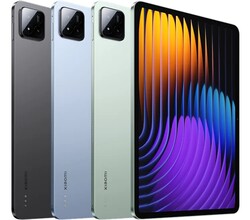
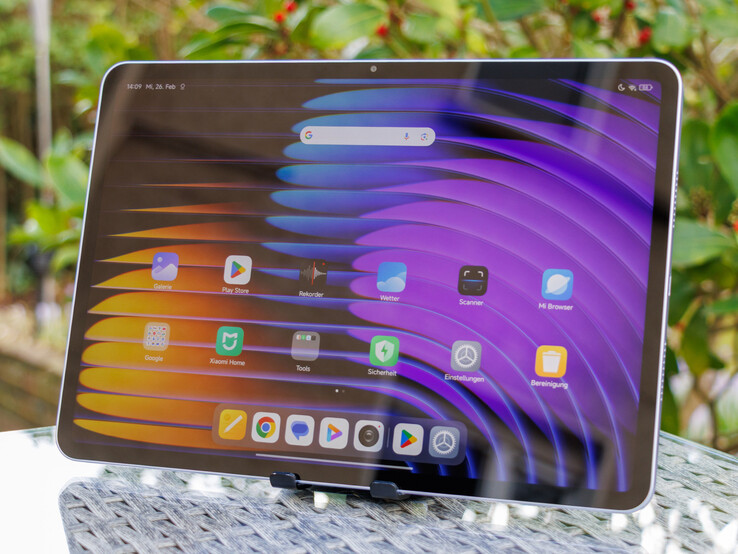









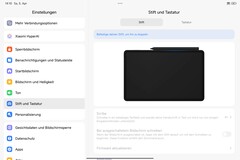


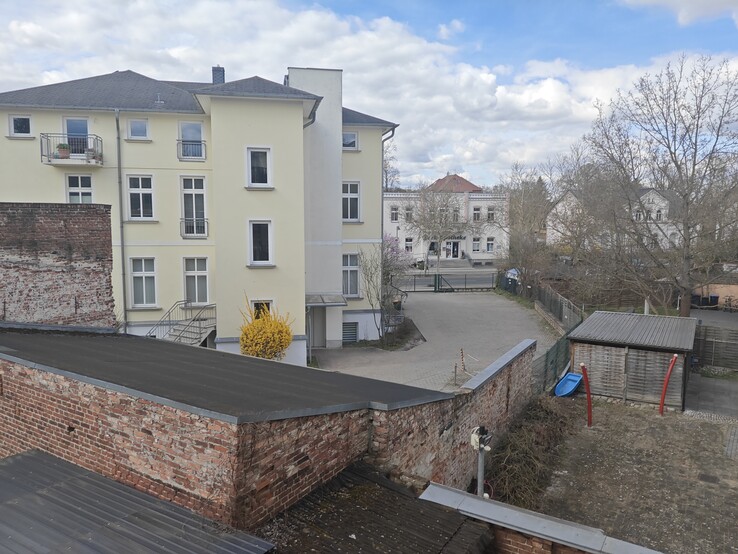





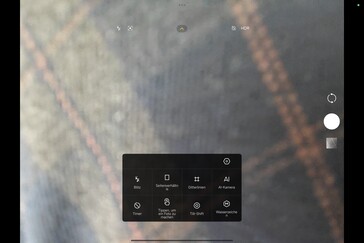
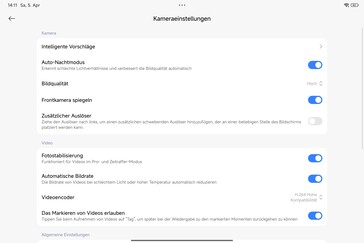

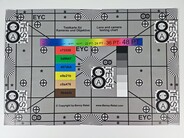



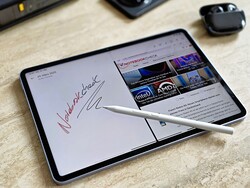
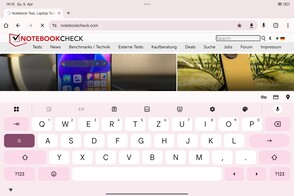
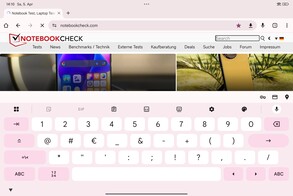


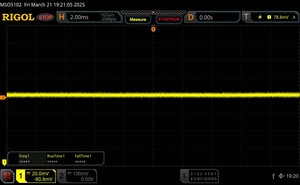


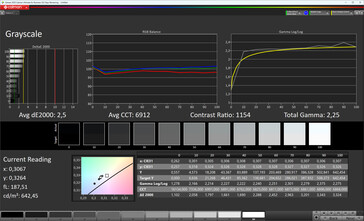


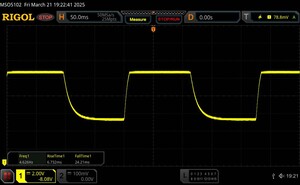
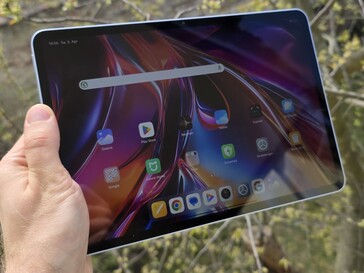
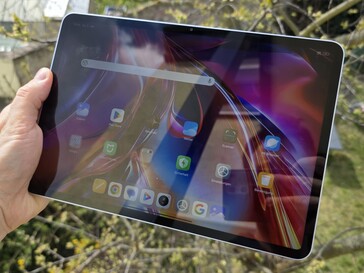

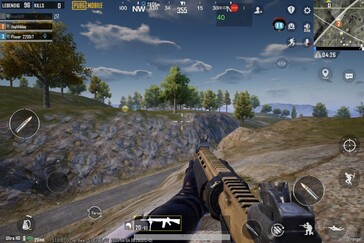

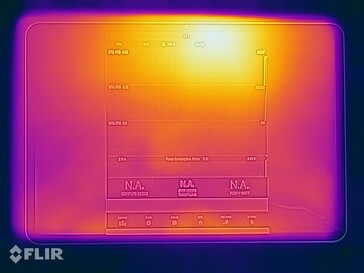
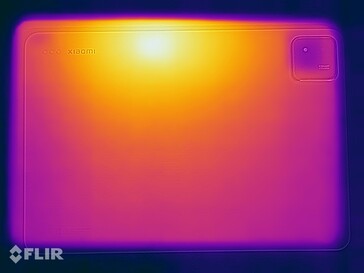
 Total Sustainability Score:
Total Sustainability Score: 

